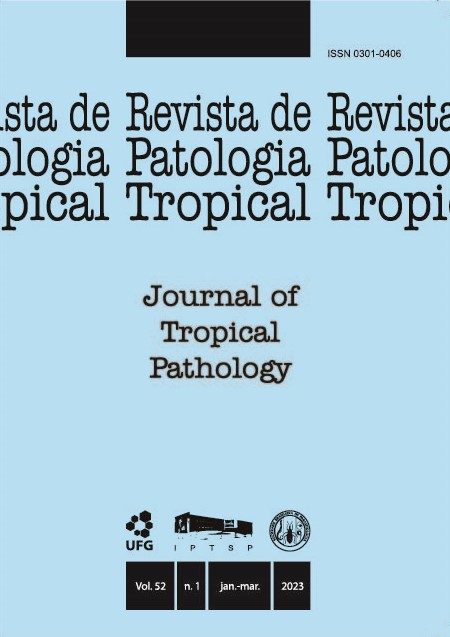Space-time risk clusters of Covid-19 in a tourism area in the northeastern Brazil: an epidemiological overview after two years of pandemic
DOI:
https://doi.org/10.5216/rpt.v52i1.73977Resumo
The world is facing a serious viral infection caused by the new Severe Acute Respiratory Syndrome Coronavirus 2. We aimed to evaluate and map the high-risk clusters of COVID-19 in the State of Alagoas, a touristic area in northeastern Brazil, after two years of pandemic by a population-based ecological study, using COVID-19 cases reported in the State of Alagoas, between March, 2020 and April, 2022. We performed a descriptive and statistical analysis of epidemiological data. We then map high-risk areas for COVID-19, using spatial analysis, considering the incidence rate by municipality. 297,972 positive cases were registered; 56.9% were female and 42.7% aged between 20 and 39 years old. Men (OR = 1.59) and older than 60 years old (OR = 29.64) had a higher risk of death, while the highest incidence rates of the disease occurred in the metropolitan region. Our data demonstrate the impact of COVID-19 in the State of Alagoas, through the two years of pandemic. Although the number of cases were greater among women and young adults, the chance of death was greater among men and older adults. High-risk clusters of the disease initially occur in metropolitan cities and tourist areas.
KEY WORDS: SARS-CoV-2; COVID-19; spatial analysis; Brazil.
Downloads
Downloads
Publicado
Como Citar
Edição
Seção
Licença
The manuscript submission must be accompanied by a letter signed by all authors stating their full name and email address, confirming that the manuscript or part of it has not been published or is under consideration for publication elsewhere, and agreeing to transfer copyright in all media and formats for Journal of Tropical Pathology.

